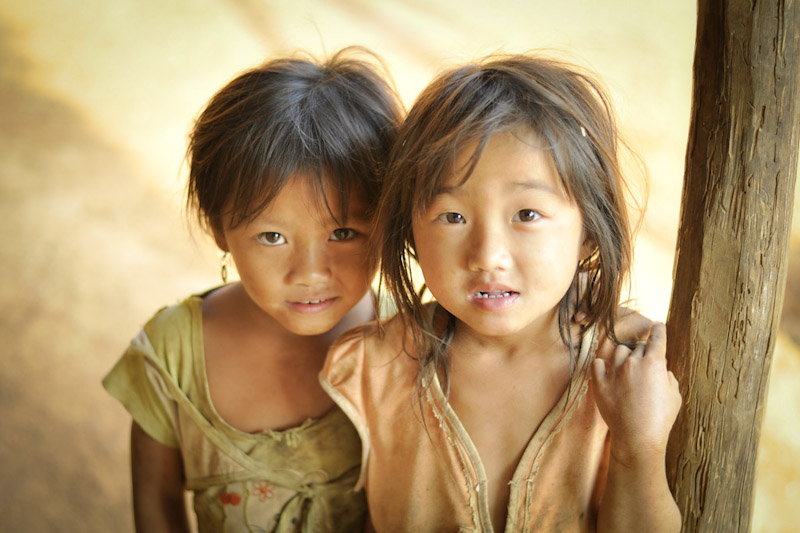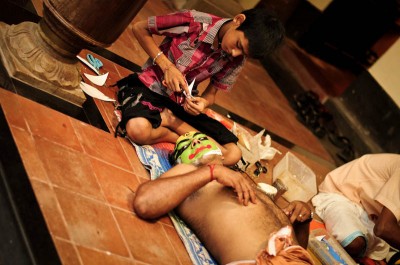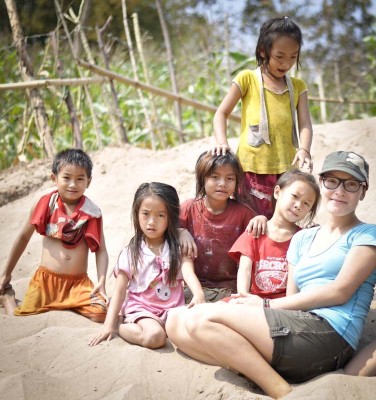 Meeting local children is often a memorable part of a visit to the developing world. But the line between helping and hurting can be tricky to navigate.
Meeting local children is often a memorable part of a visit to the developing world. But the line between helping and hurting can be tricky to navigate.
When my husband and I traveled around Southeast Asia and India last year, one of our main guiding principles was: “Leave everything a little better than you found it.”
We put a lot of research into making ethical choices. But one area that proved to be surprisingly difficult to navigate was how to interact with children. They were everywhere, some selling things or asking for money, and others just curious about a foreign face or looking to practice English.
Here are my top five dos and don’ts for interacting with children in the developing world.
Each country is unique and you need to do your own research to decide what’s best. This list offers general best practices informed by my personal experience, talking with nonprofit professionals and locals in the communities I visited.
DON’T give money to children
You will see children begging on the streets of many cities around the world. Don’t give them money.

Even more often, you will see children selling handicrafts or posing for photographs in traditional costumes for a fee.
Don’t do business with them.
We learned this when visiting the Angkor temples in Siem Riep, Cambodia. Kids were selling bracelets and postcards outside almost every temple. Our guide asked us not to buy anything from the little merchants. He said parents often take their children out of school when they see that foreigners cannot refuse to buy trinkets from little boys and girls.
It’s hard, but refusing is the right thing to do. The only thing that can help those boys and girls long-term is education.
DO support programs for youth in training
Poor children in the developing world don’t have many opportunities for a better future. One of these opportunities—sometimes the only one—is getting work in the tourism trade.
Various nonprofit organizations provide the training young people need to become cooks, servers, hotel workers or tour guides. For example, the KOTO restaurants in Hanoi and Ho Chi Minh City, Vietnam, train disadvantaged teens to work in the food service industry.
Look through your guidebook or online to see if there is a similar program in the city you a visiting.
DON’T give sweets or presents to children
If you are visiting a rural, relatively untouristed community, you may find yourself surrounded by a group of friendly, curious, giggling kids. That’s why some well-meaning travelers carry treats to give out to children or even small presents like pens and notebooks.

This practice does more harm than good because it encourages children to beg and expect handouts.
Interacting with children is a fun and rewarding experience for everyone involved. You can do it ethically. For example, talk with kids who strike up conversations with you. This will allow them to practice English and learn more about the world.
Keep your distance and be respectful, though. Treat them like you would treat your neighbor’s child back home.
DON’T go on orphanage tours
Some tour operators in developing countries offer trips to orphanages and opportunities to “volunteer for a day” under the pretext of helping the orphans. As the nonprofit ChildSafe International explains, an orphanage is a child’s home. Hordes of strangers passing through every day do not help; they traumatize children.
In addition, tour operators typically don’t conduct background checks and can’t protect children from predators.
Even if all you want to do is help, remember that children’s lives are not tourist attractions.
DO support small businesses and nonprofit organizations that serve children
The best thing you can do to improve the lives of children in the country you are visiting is patronize small, local-owned businesses. Your support can help lift families out of poverty.
If you want to help more, find a reputable nonprofit organization and donate money or find out what else is needed.
Short-term voluntourism opportunities that involve working directly with children should raise red flags. Still, it’s best to treat everything on a case-by-case basis. Vetting charities in the developing world is difficult, but your guidebook and online forums are good places to start.

Though different countries in the developing world have different challenges, many share one problem: It’s frighteningly easy to hurt a child.
Don’t become part of the problem, even unwittingly.
This may sound like a lot to think about for someone who just wants to have a fun trip. But in reality, it’s as common-sense as keeping a close eye on your valuables while traveling in the developing world.
One of the reasons you are going on a trip is to understand the world and to make connections with people. A few tips and a little research will help you do right by those people and have a great time.
All photos taken by Marat Garafutdinov with permission from the subjects and their guardians.


I’ve always found picture taking to be a great activity for interaction: taking pictures of the kids and then showing them the digital image brings joy and laughter. Sharing photos of your family and home breaks through the language barrier.
Concur on the traveler’s tips. Photos can be a home run, but to avoid being a jerk, you have to do it graciously and with permission. Perhaps the best way includes printing the photos and delivering them to families on a subsequent trip; not easy for a one-time tourist unless you arrange to deliver by mail.
Working in western Africa, I inadvertently became a community photo-historian. In a fishermen’s village, a photo I’d taken (with permission) of a youngster on the beach was too good not to frame and deliver the following trip. I delivered it to her mom, just as a polite gift. It was a hit and everybody wanted to be photographed. Over the next dozen visits to the country spread over 5 years, I took, printed, and delivered about 4,000 prints of kids, families, grandmothers with grandbabies, grandma with her goat, momma and her kiosk, kids doing cartwheels, dads mending their nets, families at the ocean’s edge …
I carry a couple of small cameras; now when I show up, the kids greet me and grab the cameras and go take pictures of each other and anything that captures their interest. Lots of photos that I’d never get the chance to take.
I took my wife to the village; I’d told them she was coming. They greeted her warmly and a mob of kids dragged her off to meet every family. I caught up with her later, exhausted and exhilarated.
The evolving friendship introduces no dependency and no risks of concern as parents are always part of the visit and picture taking. Despite my poor Portuguese, we manage to communicate about important things; I’ve been welcomed into many homes and inducted into a few families.
There are a lot of pictures I don’t take, of course. My hope is to be a friend, and encourager, and my support efforts are limited to projects managed through a local NGO recommended by the embassy.
If you have the opportunity, try delivering some good prints.
I appreciate the sentiment in this article and, as both a global traveler and development practitioner, echo several thoughts posted here.
However, it is important to recognize that ‘children’ are not a homogenous group. They are diverse by age, gender, race, class, education level, experience, language, sexuality and so much more. To treat them as a homogenous group is just as dangerous as the ‘don’ts’ listed in this article. It’s important to learn, acknowledge and respect this diversity based on the region and communities one travels to.
Second, an important point was missing in this article which relates to taking pictures of children. I see far too many tourists snap photos of children (whether they pay or not) without asking. In some cultures, taking a picture of a child is considered to steal their soul or spirit and can have detrimental social effects. In other cultures, taking pictures of girls goes against certain religious beliefs. Regardless of whether we hold the same beliefs or views, we must understand, respect and acknowledge the cultural, social and religious norms of the places we travel. Would you want your photo snapped and then posted online without your permission? Most would answer, ‘no’. So then why not treat others with the same respect you expect? When we stop viewing those we meet through our travels as ‘the other’, the real personal growth from global journeys begin.
Hi SG,
Thank you for raising these excellent points. I’d love to write something specifically about taking pictures. The most egregious violation I’ve come across involved tourists shoving cameras in the faces of monks in Luang Prabang. But it can be a fine line.
I probably wouldn’t like it if someone took my photo without my permission and posted it online, but I wouldn’t have much say about it if the photo were taken in a public place. However, I am aware of the ethical issues around photographing people of different cultures and religions. That’s why I’d like to clarify: All the photos in my post were taken with permission from those appearing in them and their guardians.
Education and service are not commodities to be delivered from the more privileged (wealthier) to the less privileged.